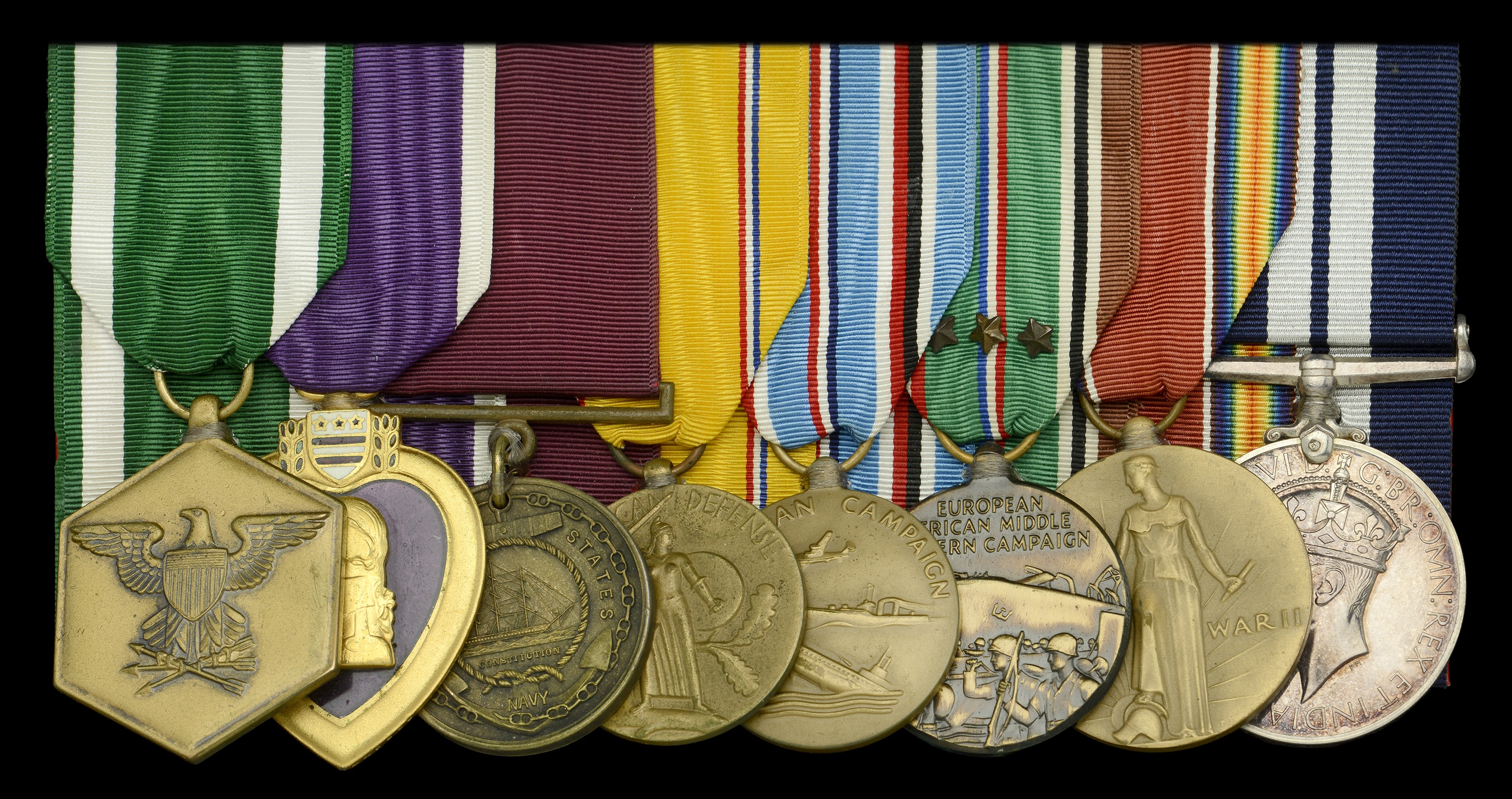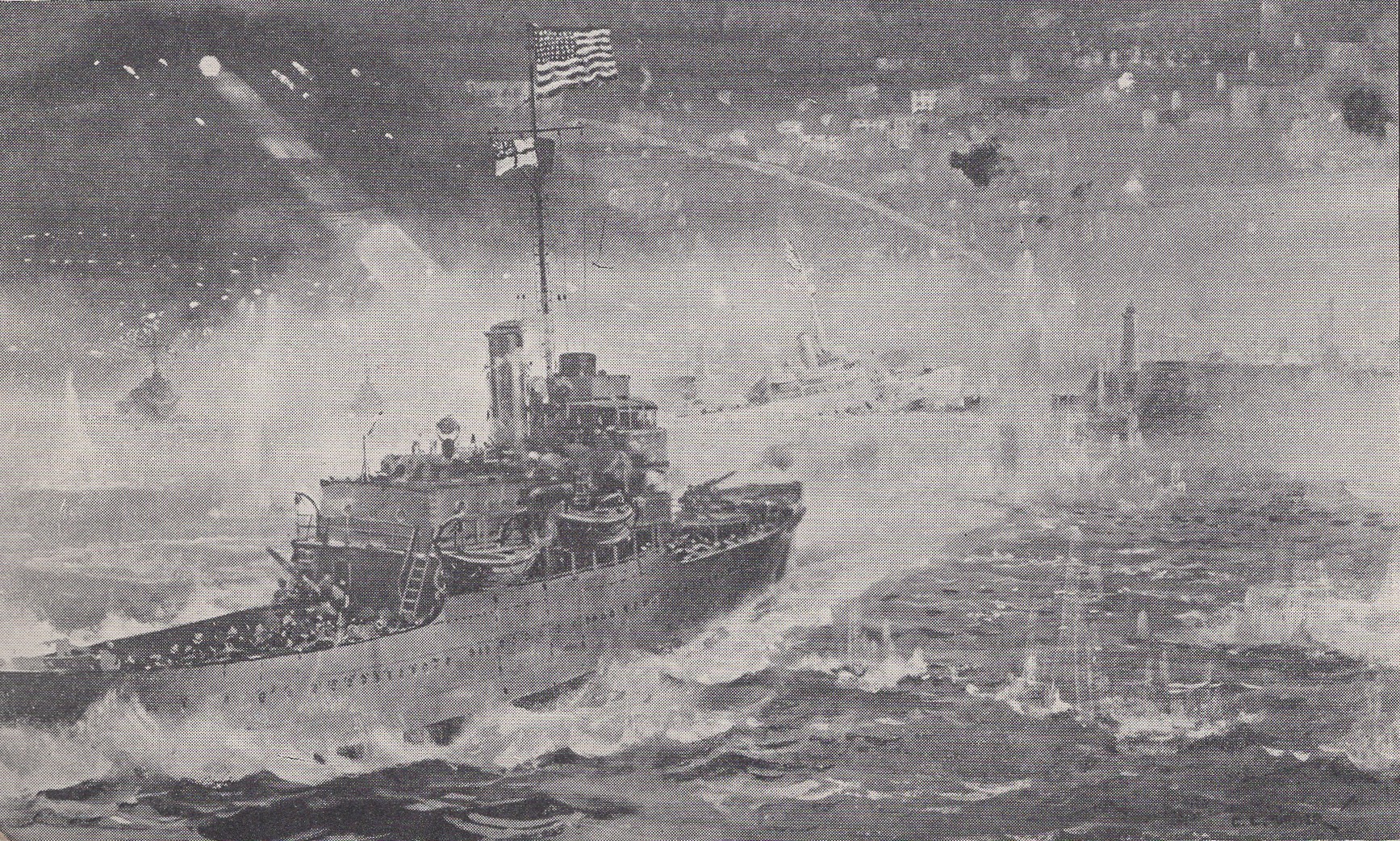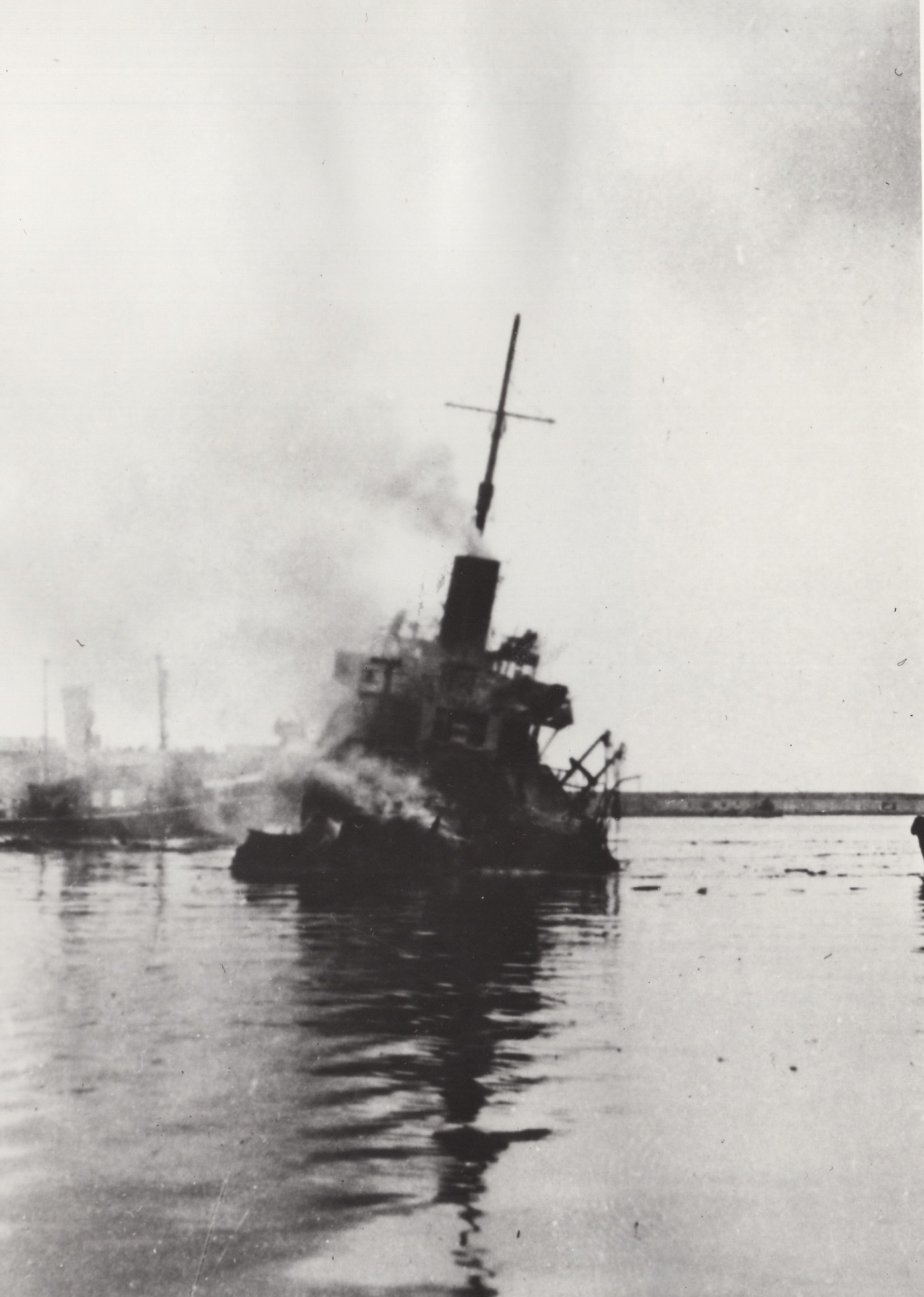The extremely rare Second War ‘V.C. action’ honorary D.S.M. group of eight awarded to Lieutenant E. Obelkevitch, United States Navy, who was decorated for his gallantry in the famous assault on Oran harbour in November 1942, when he saved numerous lives aboard the stricken ex-U.S. cutter H.M.S. Hartland Distinguished Service Medal, G.VI.R. (Mr. E. Obelkevitch. Gnr. U.S.N. H.M.S. Hartland.) impressed naming; U.S.A., Medal for Military Merit; U.S.A., Purple Heart; U.S.A., Navy Long Service; U.S.A., Defense; U.S.A., Campaign; U.S.A., European, African and Middle East Campaign,with three bronze stars; U.S.A., War Medal, these seven American awards added for display purposes and mounted for display in precedence to the D.S.M., extremely fine (8) £4,000-£5,000 --- Importation Duty This lot is subject to importation duty of 5% on the hammer price unless exported outside the UK --- --- Just 17 honorary awards of the D.S.M. were made to the United States Navy in the Second World War. Such awards were not gazetted but the original recommendation signed by Admiral of the Fleet ‘ABC’ Cunningham at Algiers on 13 October 1943 states: ‘On 8 November 1942, H.M.S. Hartland, flying the British and United States Ensigns, entered Oran under heavy fire in an attempt to prevent the sabotage of the port. Gunner Obelkevitch was leader of a boarding party. When this unit was wiped out by the explosion of a shell, he attempted to organise a hopeless attempt to extinguish the fires. His courage and initiative were an outstanding example and inspiration. He was ultimately instrumental in saving many lives of wounded men and remained on board after the deck was red hot and the ship in danger of blowing up at any moment.’ Edward Obelkevitch was born in Dickson City, Pennsylvania on 13 August 1900, and joined the United States Navy in December 1918. A Gunner (T.) by the time of the Second World War, he was appointed to command a boarding party from the ex-U.S. cutter H.M.S. Hartland in the famous attack on the port of Oran on 8 November 1942, for which action Captain F. T. Peters, D.S.O., D.S.C., R.N., overall commander of the operation in H.M.S. Walney, was awarded the Victoria Cross. Described as a ‘miniature Zeebrugge’ the assault on Oran resulted in terrible casualties, both Hartland and Walney being sunk by a torrent of point-blank fire. In his book The Turn of the Road, ex-naval officer Sir Lewis Ritchie describes the unfolding scene of carnage as Hartland came under withering fire, and pays tribute to Obelkevitch’s gallant deeds: ‘In the meanwhile, Hartland had been picked up in the searchlight and came under a devastating fire from the shore battery. The entire guns’ crews were wiped out and a steam pipe was severed, drowning everything in the noise of escaping steam. The Captain was temporarily blinded by a splinter and wounded in the leg, and before he could recover, Hartland struck the breakwater. Regaining the sight of one eye, he put the engines astern and manoeuvred his ship through the entrance, heading her for the appointed objective; this brought Hartland under point-blank fire from a French destroyer. Shells burst in the motor-room and all power failed; they also burst in the spaces where troops were waiting assembled to land, transforming them into a shambles. With fires raging fore and aft, Hartland’s way carried her alongside the mole. Lieutenant-Commander Dickey, U.S.N., calling on his men to follow him, leaped ashore to attempt to seize a trawler alongside. Only one unwounded man was able to follow him. The dead lay heaped so thick on the upper deck that the wounded could not get at the hoses to fight the fires. The First Lieutenant, Lieutenant V. A. Hickson, R.N., made a gallant effort to pass a wire ashore, but there was no one left to man it effectively. The wind now caught the ship and she began to drift helplessly out into the harbour. Lieutenant Hickson blundered forward through a tempest of machine-gun bullets and let go the anchor. The flames, funnel-high, lit the White Ensign and “Old Glory” at peak and masthead above the careless sprawling dead, and tinged the smoke rolling away to leeward across the quiet waters of the harbour with a fierce and bloody glare. As if appalled at the sight of this blazing sacrifice, the French at last ceased fire. Then, and not until then, Lieutenant-Commander Billot gave the order to abandon ship. The deck was red hot: blinded with blood and twice more wounded, he clung to the rail, summoning strength to leave the ship. Lieutenant E. G. Lawrence, R.N.V.R., and Gunner Obelkevitch, U.S.N., who had fought the fires almost single-handed to the last, swam ashore, seized the French trawler’s dingy by force, paddled her with floorboards back to where their Captain clung to a scramble net. They hauled him into the boat and he urged them in a whisper to pull for the open sea and freedom. He was fainting from his wounds; they had only the floorboards with which to row and were covered in every direction by rifles and machine-guns … they were taken prisoner as they landed.’ Obelkevitch was held by the Vichy-French until the advancing Allies liberated him a few days later, following which he was promoted to Chief Gunner and awarded the British D.S.M. A qualified diver, he was subsequently commissioned Lieutenant and served out the war as a salvage officer. Obelkevitch retired from the U.S. Navy in April 1949, and died in California in March 1971. Sold with extensive copied research.












